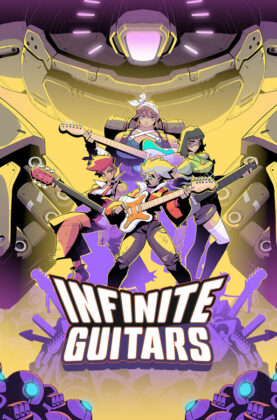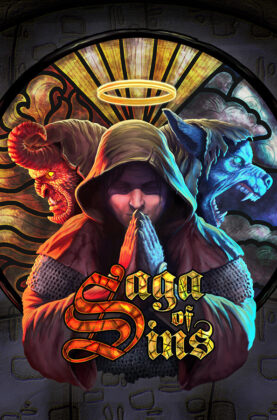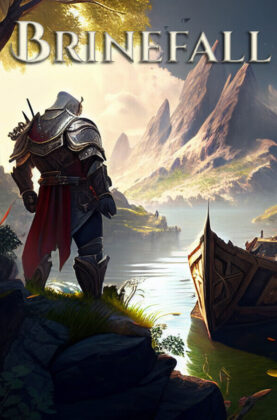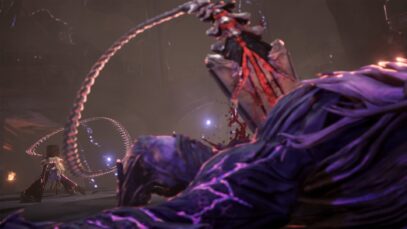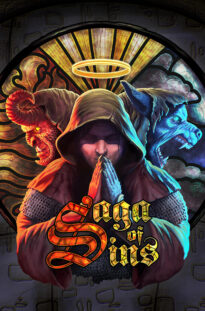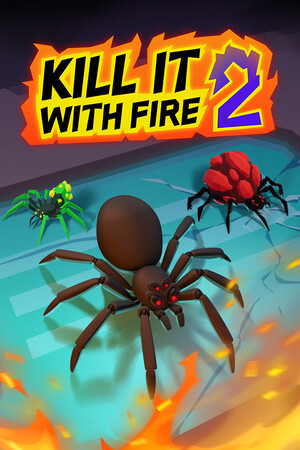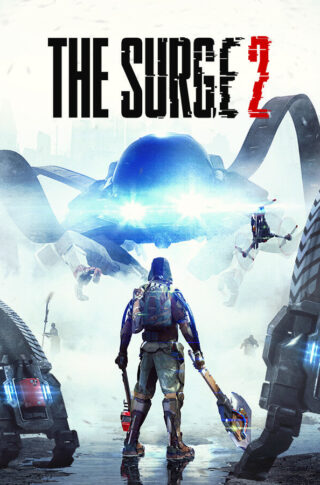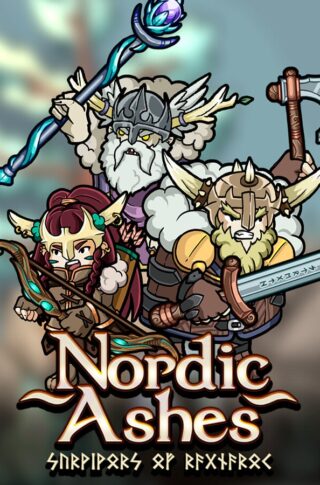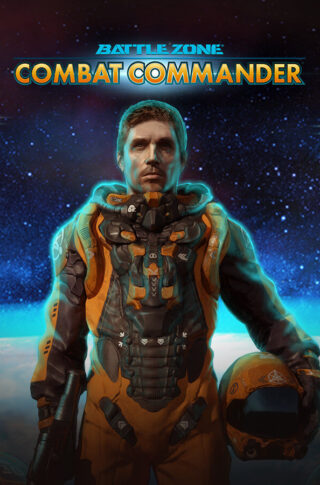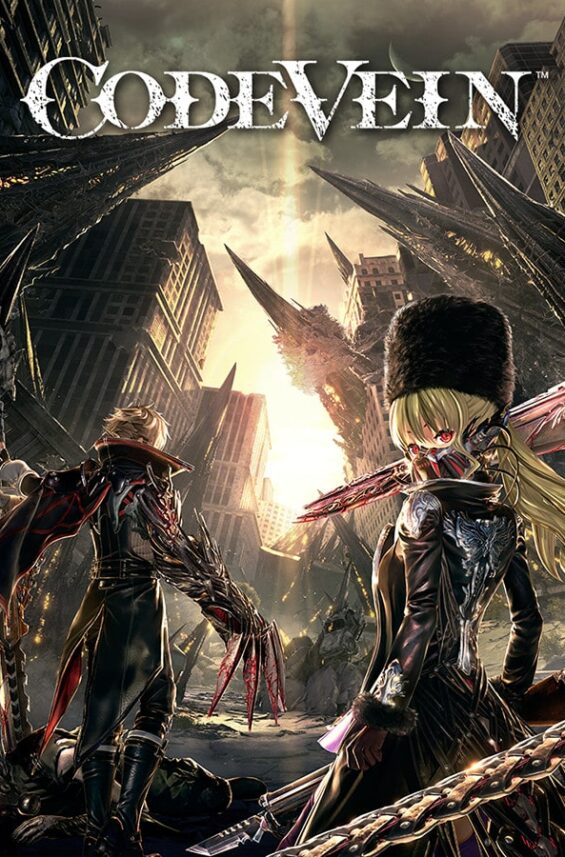
CODE VEIN Free Download
CODE VEIN Free Download Unfitgirl
CODE VEIN Free Download Unfitgirl Code Vein is loaded with beautifully animated, fully voiced cutscenes, some of which I found surprisingly affecting, but the most important line in the entire game is this: “does not open from this side”. Because while Code Vein is a third-person action-RPG unabashedly styled after Dark Souls, more than anything, it’s a dungeon-crawler. It’s a game about collecting keys, scouring maps, fighting bosses and, most importantly, opening doors. If you go into it expecting Dark Souls, you’ll be disappointed. That said, I had a lot more fun with Code Vein than I expected, and despite all its faults, I kind of want to play through it again. Revenants were created as a means to fight the Lost Queen who attacked humanity, but now that the Queen is dead and gone, the surviving Revenants are purposeless and struggling. After the war ended, they were all corralled in a fractured city by a cage of lethal red mist, and now that the Bloodsprings that sustained them are drying up, more and more are turning into Lost. It’s a bleak and intriguing setup, and Code Vein uses it to craft an ever-escalating plot which kept me guessing, even if it is a bit circuitous. I dig the underlying themes – immortality as a curse, the aftermath of war, the consequences of a power nobody asked for, and conflict driven by scarcity, to name a few – and there’s also the phantom pain of not knowing your past, which is something all Revenants grapple with.Unfitgirl.COM SEXY GAMES
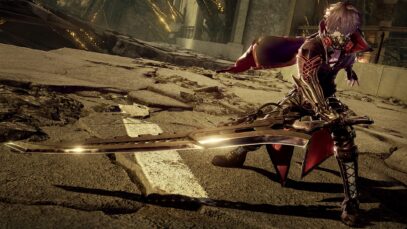
I figured Code Vein’s story would just be anime vampire nonsense, and it kind of is, but I enjoyed it because it’s told through endearing characters whose individual stories are directly shaped by your actions. You have the unique ability to not only restart Bloodsprings with your blood, but also to rekindle lost memories using Vestiges, blood crystals scattered throughout the world. Each Vestige teaches you more about the character it belongs to, whether it’s one of your allies back at base or some unfortunate Revenant that history forgot. The presentation is kind of cumbersome – basically, you walk slowly through ethereal reenactments of past events – but there are some genuine gut-punch moments in the short stories contained in Vestiges. One or two of them even made me well up a bit, but I am a sucker for sibling sob stories. Backstories aside, Vestiges also tie into the best part of Code Vein: character customization. I’m not talking about eyebrows and extra hair – though I’m still not over that – I’m talking about your abilities, or more accurately, your Gifts. You can equip eight active Gifts and four passive ones, and these determine your traits and actions in combat. Active Gifts are things like spells, buffs, and weapon arts, while passive Gifts generally increase your stats. To unlock new Gifts, you have to find new Blood Codes, which are essentially classes – stuff like Mage, Ranger, Berserker, and other, more creative variants. To truly master a Blood Code, you’ll need to find all the Vestiges related to it.
CODE VEIN: Frozen Empress.
With each Vestige unlocking a new Gift or two. You’re going to want those gifts, because when you level up in Code Vein, you only increase your health, stamina, and base attack values. All of your specific stats come from your Blood Code, your Gifts, and your gear – that is, your Blood Veil armor and your two weapons. The kicker is that once you learn most Gifts, you can use them no matter what Blood Code you have equipped as long as you have the requisite stats, like a B rank in Strength. This system marries the game’s story, exploration, and combat beautifully, and it’s the driving force of the entire game. It’s a multiclassing, min-maxing fiesta which I utterly obsessed over.
CODE VEIN is an action role-playing video game developed and published by Bandai Namco Entertainment. Here are some of its features:
-
-
- Character creation: CODE VEIN allows players to create their own custom character with various options to customize their appearance.
- Weapon variety: The game features a variety of weapons to choose from, including swords, hammers, bayonets, and spears. Each weapon has its own unique moveset and playstyle.
- Partner system: The player is accompanied by an AI-controlled partner character throughout the game. The partner can assist the player in combat and provide support with various abilities. Infinite Guitars
- Blood code system: The blood code system is a key mechanic in CODE VEIN. Blood codes are essentially character classes that provide the player with various abilities and stat bonuses.

Character creation: CODE VEIN allows players to create their own custom character with various options to customize their appearance.
-
Within five hours, I was using Gifts from more than six different Blood Codes. I spent the first half of the game as a Dexterity build with halberds and Willpower-based Dark Gifts, but when I unlocked a strong Strength-based Blood Code, I totally inverted my build to use greatswords and attack buffs, and that transition was quick and intuitive. I augmented my favorite Blood Veil to reduce its weight and improve my roll speed, and I used two passive Gifts to bump my stats just high enough to allow two specific spells. I barely managed to squeeze everything in, but because I’d gotten all the Vestiges up to that point, it worked out in the end, which was hugely satisfying. There are dozens of Blood Codes and hundreds of Gifts, and the sheer number of possible combinations is intoxicating. I agonized over how to build my character and savored every decision. This also motivated me to explore dungeons more thoroughly. I wanted to find all the Vestiges to get to know my favorite characters and to unlock the best Gifts in their Blood Codes. Building your ideal Lost-killing machine feels so good. I just wish everything surrounding that process was better. While Code Vein plays very differently from Dark Souls, parts of it are ripped straight from From Software’s playbook. Your Regeneration consumable, for example, works just like an Estus Flask; it refills when you rest at Mistle checkpoints (which work just like Bonfires) and you find items to upgrade how much it heals and how many charges it has. You level up using Haze collected by killing enemies, you lose your Haze when you die, and you can reclaim it by retracing your steps.
Weapon variety.
The weapon upgrade system is shot-for-shot Titanite. Code Vein even has its own version of Ornstein and Smough, not to mention an alternate-universe Anor Londo where all the flying buttresses were handled by M.C. Escher. It’s blatant, but I’m not complaining. These elements worked before and they work here. It’s the other stuff I dislike. Code Vein is an action-RPG with action that just isn’t that great. Combat is OK at best. Your attacks are sluggish and don’t flow together at all, so fights are stilted and all-around janky. The five weapon types – sword, greatsword, halberd, hammer, and bayonet – feel indistinct, and the only weapons with movesets that have any personality are unlocked way too late in the game. The best approach with every weapon is always just mashing Square / X until the thing dies Blocking is so punishing that it’s basically pointless, and the timing on the parry is so wonky that I never used it. Enemies are slow, blind, and stupid, and they have obvious, easily interruptable attacks. The true danger lies in the game’s questionable hitboxes. I cleared Code Vein in 35 hours with 100% completion on all maps, and I bulldozed through everything after the first five hours without any grinding whatsoever. If you’ve seen a trailer or any preview footage for Code Vein, the elevator pitch is clear: It’s an “anime Soulslike” – an action-RPG that promises the steep challenge and cautious combat that we’ve all become very acquainted with in recent years. Code Vein doesn’t simply layer generic anime style and storytelling on top of a Souls clone and call it a day, though: its unique post-apocalyptic sci-fi-meets-anime horror atmosphere stands out, and its flexible class system and an AI partner distinguish it from its peers mechanically.TEKKEN 8

Some of those ideas make things more frustrating than they need to be at times, but in this kind of game, a healthy dose of frustration comes with the territory. Code Vein deserves some credit for experimenting with this firmly established formula in ways others often don’t. True to its anime inspirations, Code Vein has a lot of story. Your custom character awakens in the ruins of a city as an undead “revenant” who feeds on blood in a wild, Mad Max-style, ghoul-eat-ghoul world. There are more revenants than people, which means food is scarce. The story itself is deadly serious, but there’s a bit of a wacky streak – including white trees that literally grow “beads” of blood. That makes the world interesting, but the wild designs sometimes felt out of place with the story’s bleak tone. You quickly link up with a likable but two-dimensional crew of allies who realize you have special abilities, sending you on a long and winding quest that’s equal parts saving the world and figuring out what the hell is going on. The story kept me involved (even when it goes off the rails) by unfurling details about the world as you go. It seems like everyone has amnesia, so every story thread has a mystery of some kind. While the revelations are never as powerful (or as clarifying) as those in, say, Horizon: Zero Dawn, the slow drip of information filled in my understanding of what has happened and how it connects to the people, places, and things I’d seen. While the main plot relies on cutscenes, many of the individual characters’ stories play out through blood echoes, slow-moving story sequences where you walk (very slowly) through corridors with still images that sync up to audio logs. I don’t have a problem with this kind of secondary storytelling.
Character creation.
But I wish that more of these more interesting stories could have been better integrated into the main plot, rather than bringing the pace to a crawl to develop its characters and deliver important details about the world. For all its twists and turns, most of the story in Code Vein feels very separate from what you actually do. You spend hours and hours exploring the labyrinthine caverns and city ruins of the revenant world, cutting through enemies (referred to as the Lost) in typical Soulslike fashion. If you’ve played any of these games – Dark Souls, Bloodborne, The Surge (or The Surge 2, which also came out this week) – you know the drill. There are save points called Mistle that recharge your healing item; Each twisty, turny level has shortcuts that allow you to bypass certain sections when you have to work your way back to where you died; combat demands precision, requiring you to play cautiously, dodge often, and choose your moments. That said, your options extend far beyond the average stick-and-move tactics I’ve cultivated from years of playing similar games. Your character has an effectively unlimited capacity to invent and reinvent him or herself by changing their class, called a “Blood Code,” at any time. Each one has its own profile with stats that scale to your level in different ways, proficiencies for different weapons, including old standbys like heavy-hitting giant swords and polearms, as well as some unique options like the Bayonet, which has a magic-powered gunshot as its heavy attack. Each class also offers a set of special abilities called Gifts that, when paired with a certain set of specs, create a relatively distinct spin on your character.
When using a heavy class, for example, I preferred bringing along the team’s leader, Louis, who uses quick attacks and magic.But when I switched to a long-range class, I liked fighting alongside Yakumo, the resident brawler. In combat, each fighter’s unique skills feel more or less compatible, which makes me feel more or less connected to them. It’s on you to figure out how best to take advantage of their skills, though often it’s okay to simply let them keep some of the enemies off your back while you fight. Having a partner changes the flow of combat, usually for better but sometimes for much, much worse. The good part is that because you’ll often fight groups of enemies – three or four at a time is pretty common – having a second character on your side makes each battle feel more epic as fighting goes on around you too. At the same time, once you get the hang of the controls, most fights are less stressful because you have a bit of a safety net. Your capacity to defeat many of Code Vein’s harder bosses comes down to how your inconsistent AI partner happens to perform. “ When the going gets really tough, though, things fall apart. Most of the AI partners are relentlessly aggressive and can’t really read enemy attack patterns, which means that in boss battles they will inevitably die if you don’t protect or heal them. And once they die, more often than not you’ll end up dying as well without their help, even if you were just using them to get a little breathing room. That means your capacity to defeat many of Code Vein’s harder bosses comes down to how your inconsistent partner happens to perform in a given attempt, which adds a frustrating amount of randomness to a game where combat otherwise emphasizes skill by asking you to time your attacks and dodges perfectly.

Team up with an AI partner or a friend in co-op multiplayer and venture out into a world of destruction in this story driven connected dungeon experience. Use your combined strength to coordinate your approach and defend each other from surprise attacks or tackle overpowered enemies. Acquire new gear, level up your character, and become more powerful to rise up against the Lost. From new players to seasoned action game veterans, the challenges in CODE VEIN will keep you coming back for more. Choose from various weapons such as bayonets, axes, spears, and more. Enhance your character’s abilities with powerful Blood Code enhancements, each with access to various “Gifts” that can increase your strength, weaken enemies, and can allow you to utilize new weapon abilities or access overpowered attacks. Finish off your opponents with your Blood Veil, powerful blood draining tools, each with their own unique visual and attack style that opens up a myriad of new combat strategies. Team up and embark on a journey to the ends of hell to unlock your past and escape your living nightmare in CODE VEIN. Death may feel permanent but your loadout doesn’t have to. Change your character class at any time, unlock the ability to mix and match skills, or choose different NPCs to partner with, all of which could make the difference between life and death. As someone who was recently diagnosed with a terminal illness and given less than a year to live, I’m incredibly grateful to have played Code Vein before my time runs out. This game is a true masterpiece, with every aspect, from the gameplay to the atmosphere, graphics, and story, expertly crafted.Sniper Elite 5
ADD ONS-DLC’S-PACKAGES-MODS-CLOUD SAVES-LOCALIZATION-APP INFO-ACHEIVEMENTS: CODE VEIN Venous Claws
| Venous Claws | VC 2023 Redist | DirectX Jun 2023 Redist | Season Pass | Pre-Order DLC Bundle | Alternate Mia Set |
| Lord of Thunder | Frozen Empress | LATAM | Steam Sub 425760 | Steam Sub 193780 | – |
| – | – | – | – | – | – |
| – | – | – | – | – | 2023 Best Games |
[/vc_column_text][/vc_column][/vc_row]
OS: Windows 7 SP1 or Windows 10 (64-bit)
Processor: Intel Core i5-2300
Memory: 6 GB RAM
Graphics: GeForce GTX 760 or Radeon HD 7850
DirectX: Version 11
Network: Broadband Internet connection
Storage: 35 GB available space
Sound Card: DirectX compatible soundcard or onboard chipset
Additional Notes: Estimated performance: 1080p/60fps with graphics settings at “Low”. Framerate might drop in graphics-intensive scenes. – 64-bit processor and operating system are required.
Requires a 64-bit processor and operating system
OS: Windows 7 SP1 or Windows 10 (64-bit)
Processor: Intel Core i5-7400 or AMD Ryzen 3 2200G
Memory: 8 GB RAM
Graphics: GeForce GTX 960 or Radeon R9 380X
DirectX: Version 11
Network: Broadband Internet connection
Storage: 35 GB available space
Sound Card: DirectX compatible soundcard or onboard chipset
Additional Notes: Estimated performance: 1080p/60fps with graphics settings at “High”. Framerate might drop in graphics-intensive scenes. – 64-bit processor and operating system are required. – Windows 10 (Version 1809 or later) and a 4GB VRAM GPU (graphics board or video card) are required for DirectX 12 API.
NOTE: THESE STEPS MAY VARY FROM GAME TO GAME AND DO NOT APPLY TO ALL GAMES
- Open the Start menu (Windows ‘flag’ button) in the bottom left corner of the screen.
- At the bottom of the Start menu, type Folder Options into the Search box, then press the Enter key.
- Click on the View tab at the top of the Folder Options window and check the option to Show hidden files and folders (in Windows 11, this option is called Show hidden files, folders, and drives).
- Click Apply then OK.
- Return to the Start menu and select Computer, then double click Local Disk (C:), and then open the Program Files folder. On some systems, this folder is called ‘Program Files(x86)’.
- In the Program Files folder, find and open the folder for your game.
- In the game’s folder, locate the executable (.exe) file for the game–this is a faded icon with the game’s title.
- Right-click on this file, select Properties, and then click the Compatibility tab at the top of the Properties window.
- Check the Run this program as an administrator box in the Privilege Level section. Click Apply then OK.
- Once complete, try opening the game again
NOTE: PLEASE DOWNLOAD THE LATEST VERSION OF YUZU EMULATOR FOR SOME GAMES YOU MAY NEED RYUJINX EMULATOR
Once you have all the required components, it’s time to set up Yuzu emulator on your PC. Here’s how to do it:
-
-
- Step 1: Download Yuzu emulator from the official website.
- Step 2: Extract the downloaded file to a location of your choice.
- Step 3: Download the required system files and keys from the official Yuzu website.
- Step 4: Extract the system files and keys to the ‘sysdata’ folder in the Yuzu emulator directory.
- Step 5: Launch Yuzu emulator and select ‘File’ -> ‘Open File’ to load your Nintendo Switch game.
-
Using Yuzu Emulator
Now that you have set up Yuzu emulator on your PC, let’s take a look at how to use it to play your favorite Nintendo Switch games.
-
-
- Step 1: Launch Yuzu emulator and select ‘File’ -> ‘Open File’ to load your Nintendo Switch game.
- Step 2: Wait for the game to load. This may take a few minutes depending on your PC specifications and the size of the game.
- Step 3: Once the game has loaded, use your keyboard or controller to play the game.
-
Tips and Tricks for Using Yuzu Emulator
-
-
- Make sure your PC meets the minimum requirements for Yuzu emulator to avoid lag and other performance issues.
- Use a graphics card that supports OpenGL 4.3 or higher for better graphics and smoother gameplay.
- Make sure you download the required system files and keys from the official Yuzu website to avoid any issues with loading the game.
- Customize your controller settings to suit your preferences for the best possible gaming experience.
- Experiment with different graphics settings to find the right balance between performance and visual quality.
-



